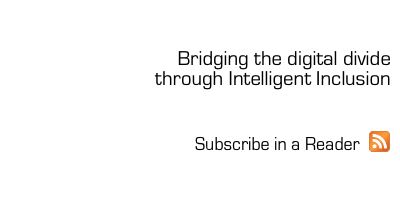
If you want to see something adopted massively in a remarkably short period, you should look into the mobile arena. There are over 6.4 billion subscriptions globally, almost one per inhabitant in the planet, and the numbers keep growing every month. In May 2012, more than 10% of the global Web page-views came from mobile devices. It is growing globally, but how can we speed up the process?
To answer this question we have to look at the key hurdles that are preventing a faster adoption of the services. They can be broadly split into cost issues, usage issues and interest of the users.
Usage issues are broad, ranging from literacy to capabilities of the devices that are being used. In the developing world, we still have a large base of handsets that include web access, but have a poor combination of small screens and hard to type keyboards. It is slowly changing, with the help from Nokia and cheap Android manufacturers that are driving down the prices. I would like to stress that we do NOT need smartphones to access the Internet: 99% of the Internet access in Kenya is done on mobile phones, 70% in Egypt, 59% in India (*). Nokia and cheap Chinese Android handsets manufactures are driving down the prices, bringing a new wave of smartphones in the users’ hands.
The next barrier is interest. That is quickly going up as more and more governments implement new digital inclusion policies, and maintain their efforts of convincing people to go online.
Now we reach the biggest issue: cost. Mobile data services have a stronger impact in the usage of the operators’ infrastructure than voice services, and are consequently more expensive. Very few carriers have advanced pricing strategies to accommodate the usage of data services by lower income subscribers. The usual plans, a combination of speed and performance with strict usage limits, are designed for higher income people, generally with a post-paid account. Sometimes, it takes a player outside the industry to experiment with radical ideas to reduce the digital divide. And Google is doing that in the Philippines and South Africa.
Google partnered with Globe to offer a radical services: free access to Google Services like Gmail, Google+ and Google Search. By using a specific domain g.co/freezone, users have access to all the services, plus access to the first webpage after the click in a Google Search. If the users try to access another page, they have to pay for it directly to the operator. For these users, being able to access an email is the difference between finding a job or not, even freelance work. They can subscribe to services provided by the governments, like health care, and receive the necessary information by email. Sharing of pictures and videos is done through Google+, and works in devices with these functionalities. Despite the limitations, it is an ingenious way to enable people to access Internet Services. We are so used to the experience of accessing the internet by fast laptops of desktops, with a broadband connection, that we forget the world around us. Solutions based on compromises are capable of matching the expectations of these new digital immigrants. The service is now being tested by 8Ta in South Africa, and we need to see the results in the end of this semester.
Google said that they want to help the next billion users to access the Internet, and they are on the right track. Facebook is trying something similar, and I expect other Internet players to follow suit. They already understood that the next battle for consumer attention will be fought on the mobile phones, and the early movers will have a clear advantage.
And you, what have you seen in your country?
Cheers,
Caetano Notari
(*) 2010 Survey – On Device Research – http://ondeviceresearch.com/blog
Recommended Reading:
Digital Divide: are costs the only hurdles?
Join the discussions, subscribe to our newsletter.


{ 0 comments… add one now }
You must log in to post a comment.